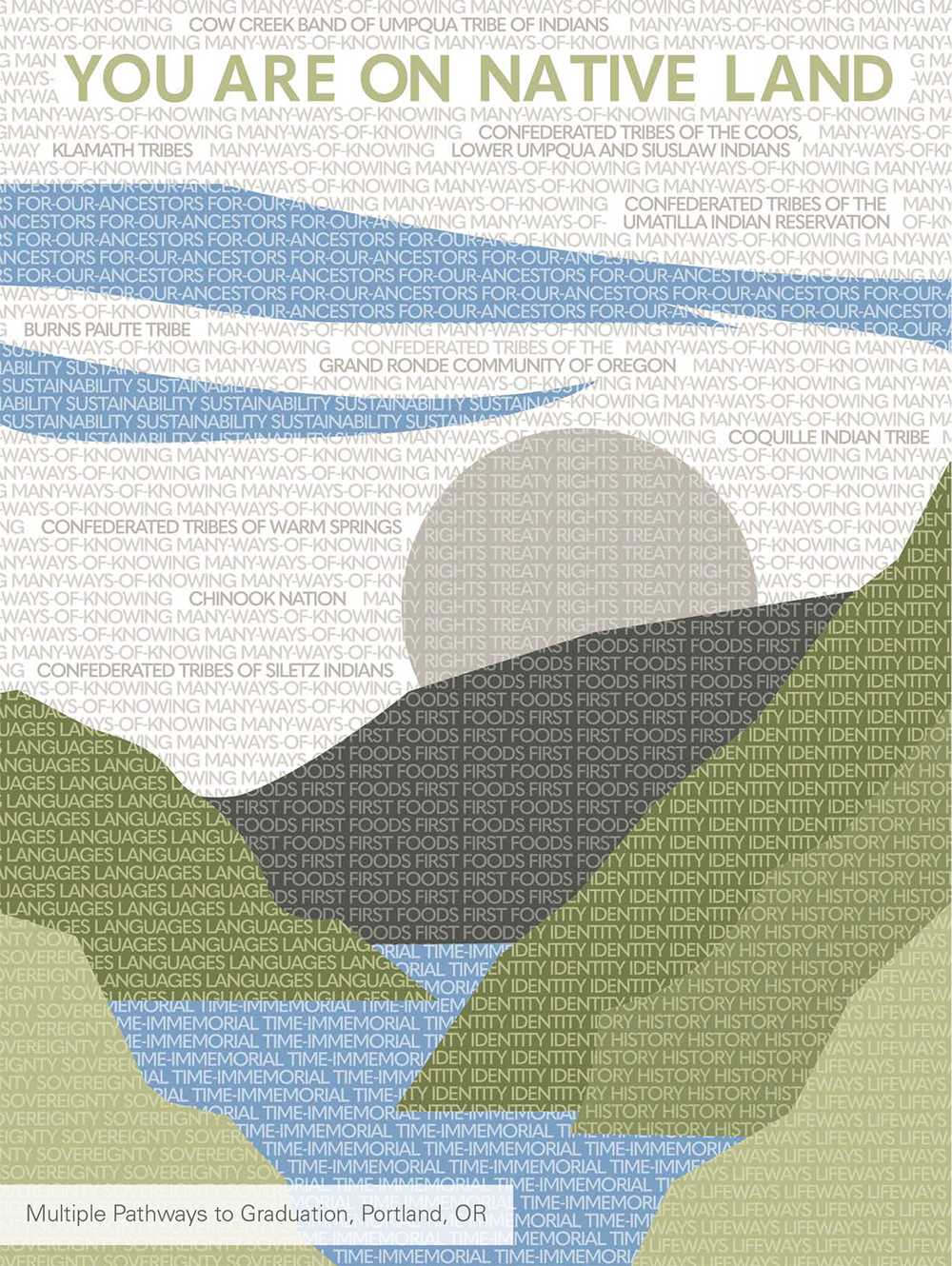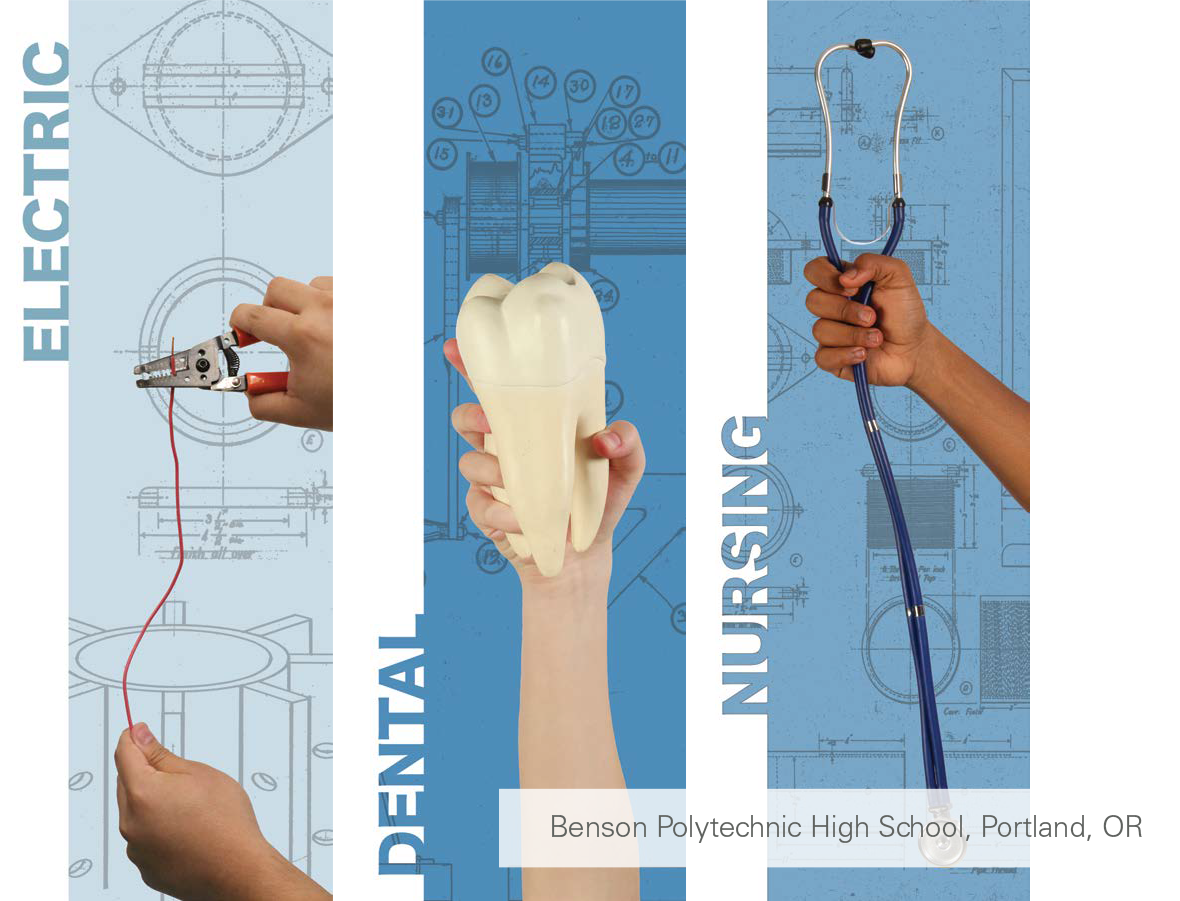Enhancing Educational Spaces Through Experiential Graphic Design and Student Engagement
 By Elaine Danielson, LEED Green Associate, Graphic Designer, Bassetti Architects
December 19, 2023
By Elaine Danielson, LEED Green Associate, Graphic Designer, Bassetti Architects
December 19, 2023
Experiential Graphic Design (EGD) is an innovative discipline
that orchestrates typography, color, imagery, technology, and
content to create immersive environments. Throughout history,
human civilizations have used graphic elements to convey ideas,
stories, and emotions, making EGD an essential aspect of visual
communication. EGD evolved through various art forms, such as
cave paintings, hieroglyphics, Roman lettering, stained glass, and
murals. It was used for everything from propaganda to branded
environments to wayfinding. It has become an integrated
element of our built environments whether it is used in malls,
offices, or schools.

In the realm of education, EGD is going a step further. Emerging
as an innovative approach to transforming schools and learning
spaces, EGD creates engaging, personalized, and inspiring
environments. By combining EGD with student engagement
and expression, educational facilities can become more than just
places of instruction – they can become canvases for fostering
creativity, inclusivity, and a sense of community.

One example is using EGD to bring the outside world inside.
Biophilic EGD in educational spaces can help emphasize a
connection to nature. Studies have shown that exposure to
natural elements can have a positive impact on students’ wellbeing
and learning outcomes. Spruce Elementary School, which
sits on an evergreen forested site, has embraced biophilic
EGD. For example, a stairwell graphic features an evergreen
tree with roots extended, reaching into a field of words about
trees – leaf, roots, branch – written in student handwriting in
the 20 languages spoken at the school. At each of the learning
communities, large prints of nature elements depict one of the
four seasons. Rounds from trees that were cleared for the new
building were used to create a timeline of notable events decided
by Spruce students.

Experiential graphic design can also celebrate and acknowledge
the unique qualities of a school’s location and its community
beyond its immediate landscape. For example, in Federal Way,
Washington, Lakota Middle School graphics celebrate the
Lushootseed language, one of the languages of the indigenous
Coast Salish peoples upon whose ancestral land the school resides. The Land Acknowledgment Project at Portland Public
Schools’ Multiple Pathways to Graduation uses cultural
references, symbolism, and languages meaningful to the
community in a large experiential graphic that pays homage to
the people who have inhabited the land since time immemorial.
Social-Emotional Learning (SEL) can benefit from the application
of EGD, which can use graphics to create spaces that allow for
personalization, privacy for individual study or mentoring, and
spaces of refuge within the greater learning community. Uplifting
messages about self-worth, strategically placed throughout
the school, help students focus on positive and encouraging
thoughts, leading to improved self-efficacy and better learning
outcomes. Graphics on translucent materials, like glass, play
a critical role in defining spaces that require visibility while
maintaining privacy, such as conference rooms and small reading
areas.
One of the most remarkable aspects of EGD in educational
spaces is how easily we can involve students in the design
process. Portland Public Schools’ Multiple Pathways to
Graduation exemplifies this concept, wherein students were
included throughout the design process. Their voices ensured
that the new school had a strong connection to nature and the
personal expression of the students in the designs. Not only did
we listen to students, but we worked with them to create wall
graphics for their school using inspiring quotes which they wrote.

Additionally, at the neighboring Benson Polytechnic High
School, students designed banners that will line the new school
courtyard. Bassetti held design workshops and critiqued the
students’ work. These seemingly small moves help to create an
atmosphere that is by and for the students and one that inspires
them throughout the day. Student responses to being involved in
creating the EGD included: “I think it’s really cool that I get to be
a part of something like that.” And “I think it will make the school
feel much more personal and connected to the students who go
there.”

Experiential graphic design has brought a transformative wave
of creativity, engagement, and personalization to educational
spaces. By embracing EGD and involving students in the design
process, schools can create environments that not only inspire
learning but also foster a deep sense of community, cultural
appreciation, and connection to the world beyond the classroom.
As EGD continues to evolve, the potential for educational spaces
to become even more inclusive, expressive, and empowering for
students remains boundless.